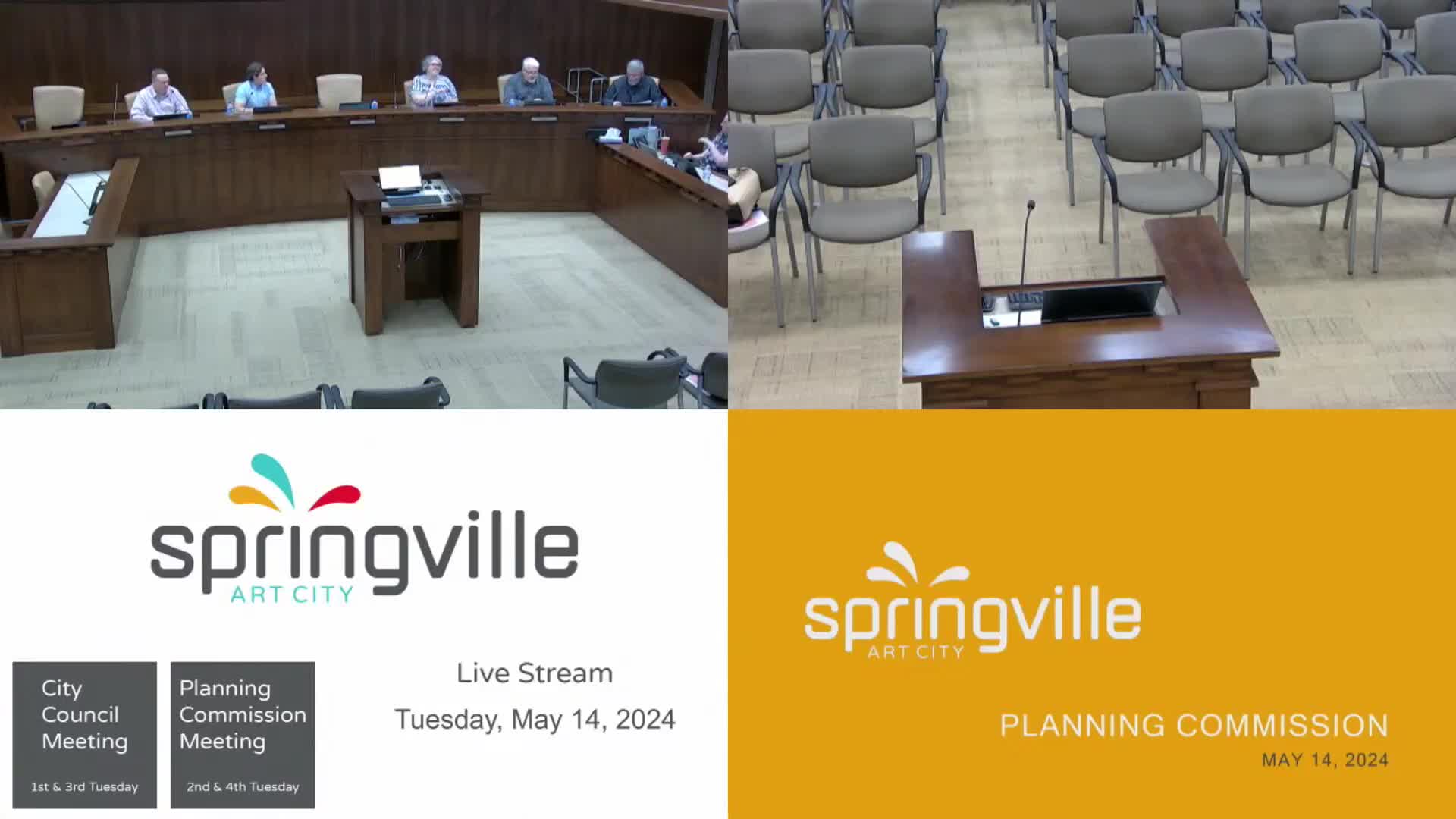Springville City unveils interactive GIS map for property owners and developers
May 15, 2024 | Springville City Council, Springville, Utah County, Utah

This article was created by AI summarizing key points discussed. AI makes mistakes, so for full details and context, please refer to the video of the full meeting. Please report any errors so we can fix them. Report an error »

In the heart of Springville, Utah, city officials gathered on May 15, 2024, to discuss vital planning tools that will shape the future of the community. The atmosphere in the city hall was a blend of anticipation and focus as council members and planning commission members delved into the intricacies of the Springville City e-map, a digital resource designed to aid developers and property owners in navigating local zoning regulations.
The meeting kicked off with a light-hearted moment, but quickly transitioned into a serious training session on the e-map's functionalities. This interactive tool is pivotal for understanding the city’s zoning overlays and infrastructure details. Officials emphasized its user-friendly nature, allowing users to access various layers of information, from property boundaries to infrastructure specifics like pipe sizes.
One of the key discussions revolved around the importance of zoning overlays. These overlays, such as the Westfields and historic district overlays, provide additional guidelines that can supersede base zoning regulations. This flexibility allows the city to maintain specific design standards across different zones without the need to create numerous base zones. For instance, the Westfields overlay can grant density bonuses in certain areas, encouraging thoughtful development while preserving the character of the community.
Council members highlighted the e-map's advantages over traditional county records, noting that it not only shows ownership details but also informs users about applicable overlays. This feature is crucial for property owners who may not be aware of the implications of these overlays until they engage with city officials. The default setting of the e-map ensures that overlays are visible, prompting users to understand their significance before making decisions.
As the meeting progressed, officials demonstrated how the e-map could assist in preliminary assessments of property dimensions, although they cautioned that it should not replace professional surveys. This tool empowers both city planners and property owners to have informed discussions about development possibilities and requirements.
The session concluded with a sense of optimism about the potential for the e-map to enhance communication between the city and its residents. As Springville continues to grow, tools like these will play a crucial role in guiding development while ensuring that the community's unique character is preserved. The council's commitment to transparency and accessibility in planning processes reflects a broader vision for a collaborative future in Springville.
The meeting kicked off with a light-hearted moment, but quickly transitioned into a serious training session on the e-map's functionalities. This interactive tool is pivotal for understanding the city’s zoning overlays and infrastructure details. Officials emphasized its user-friendly nature, allowing users to access various layers of information, from property boundaries to infrastructure specifics like pipe sizes.
One of the key discussions revolved around the importance of zoning overlays. These overlays, such as the Westfields and historic district overlays, provide additional guidelines that can supersede base zoning regulations. This flexibility allows the city to maintain specific design standards across different zones without the need to create numerous base zones. For instance, the Westfields overlay can grant density bonuses in certain areas, encouraging thoughtful development while preserving the character of the community.
Council members highlighted the e-map's advantages over traditional county records, noting that it not only shows ownership details but also informs users about applicable overlays. This feature is crucial for property owners who may not be aware of the implications of these overlays until they engage with city officials. The default setting of the e-map ensures that overlays are visible, prompting users to understand their significance before making decisions.
As the meeting progressed, officials demonstrated how the e-map could assist in preliminary assessments of property dimensions, although they cautioned that it should not replace professional surveys. This tool empowers both city planners and property owners to have informed discussions about development possibilities and requirements.
The session concluded with a sense of optimism about the potential for the e-map to enhance communication between the city and its residents. As Springville continues to grow, tools like these will play a crucial role in guiding development while ensuring that the community's unique character is preserved. The council's commitment to transparency and accessibility in planning processes reflects a broader vision for a collaborative future in Springville.
View full meeting
This article is based on a recent meeting—watch the full video and explore the complete transcript for deeper insights into the discussion.
View full meeting

